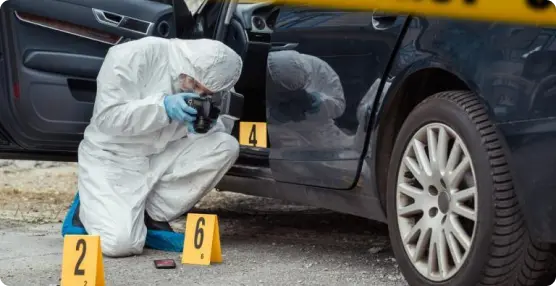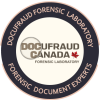Forensic Laboratory
Forensic Laboratory
Our forensic laboratory is located in Toronto, Ontario and is accessible to all members of the public including lawyers, private investigators, government agencies and regulatory bodies. Our forensic examiners are experts in their field and will prepare a court ready forensic report for acceptance by court in all Provincial jurisdictions within Canada and outside of Canada. Government agencies including the police, RCMP and FBI have access to their own forensic laboratories and forensic examiners. Currently there are limited options for non-governmental agencies or members of the public to obtain their own independent and unbiased analysis of trace evidence. Evidence collection can be examined and used in criminal as well as civil proceedings.


Forensic testing is primarily used as an investigative aid allowing the investigator to focus their attention in a particular direction or a person of interest. Forensic testing is also used to confirm or refute results put forth by police agencies or investigators. Our forensic examiners will undertake a comprehensive examination unbiased and independent of police or prosecutors. We will send a trained forensic technician to an accident or crime scene to collect and document evidence for use in both criminal and civil proceedings. Evidence collected will be transported to our laboratory for a detailed examination using the latest state-of-the-art high resolution microscopic equipment. Our findings will be verified by a forensic examiner qualified to testify and present evidence on your behalf as an expert witness. We will prepare a court ready forensic report for acceptance by courts in all jurisdictions within Canada and outside of Canada.
Below are listings of our expertise and forensic specialties:
Spyware Detection and Removal:
Hidden cameras, listening devices or GPS trackers are a growing concern. We employ the latest equipment for the detection and removal of these pesky devices. Whether your needs are to ensure privacy at a bed & breakfast, your home or vehicle, we have a team ready to perform a complete sweep to ensure peace of mind.
Let us conduct a thorough electronic sweep of your office or boardroom. Electronic listening devices are everywhere and you’ll never know who’s listening to your confidential conversations. Once discovered and removed, we’ll photograph the scene. We’ll take the evidence to our lab for the development of latent fingerprints and later suspect matching.
Fingerprints and shoe impressions can be valuable pieces of evidence to eliminate a witness or suspect from further investigation. Prior to dusting and lifting a fingerprint or shoe impression, a full series of photographic images are taken of the immediate vicinity and area of interest. Close-up photographic images are taken of the print prior to lifting.


Indented Writing
can be described as the force from a writing instrument that leaves an impression on a writing surface, usually paper or a pad of papers. The indented impression is often obliterated by ink from the actual writing and not visible to the eye. Using our specialized equipment, we can identify writing up to 8 to 10 pages deep. All manner of documents benefit from the detection of indented writing. Notably these are hold-up notes, suicide notes, offensive letters written anonymously, or simply the detection of an altered or manipulated document. The detection of obliterated writing found on the reverse side of a document can reveal the true nature of an authors intent.
Fingerprints
Collection and comparison of fingerprints can be valuable to eliminate a witness or suspect from further investigation. It can also be used to assist in the matching of latent prints found at a crime scene or confirm the presence of a person at a particular location. Fingerprints can be collected from a large number of surfaces including paper, wood, ceramic, vinyl, walls coffee mugs and glass.
Shoe Impressions
In criminal investigations a shoe impression can be a valuable investigative tool to identify and place a particular person at a crime scene. It is common however to misidentify a particular wear pattern of a shoe impression. Law enforcement count on an accused person to be unable to obtain a second opinion.
Memorabilia
Typical everyday uses are determining the condition of collectible items such as stamps, coins, and trading cards. These items are often targets for fraud or forgery. Ultra-high magnification can detect tears, unusual wear and scratches. Examination using high-tech instruments such as the Keyence VHS-X1 will reveal evidence of fraud or manipulation by unscrupulous individuals to artificially increase the price of memorabilia.











